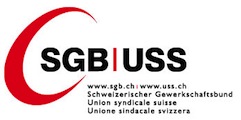Publications des institutions partenaires
Returns from investing in S&P500 futures options, 1985-2010
Puts and calls on S&P500 futures are bought and sold for various purposes including speculation, hedging and portfolio insurance. We investigate the rate of return from buying or selling these options from the start of options trading in 1985 until 2010. These rates of return are variable and depend upon the trading horizons, the level of the VIX volatility index, whether the...
Institution partenaire
English / 01/01/2014
Optimal risk and liquidity management with costly refinancing opportunities
In this paper we study risk and liquidity management decisions within an insurance firm. Risk management corresponds to decisions regarding proportional reinsurance, whereas liquidity management has two components: distribution of dividends and costly equity issuance. Contingent on whether proportional or fixed costs of reinvestment are considered, singular stochastic control or...
Institution partenaire
English / 01/01/2014
Volatility and Correlation Modelling for Equity Indices
Institution partenaire
English / 01/01/2014
Financial Networks
The financial system performs vital functions for the world economy. Very often one of more aspect of this system can be described by means of a complex graph. In this chapter under the generic name of financial networks we indicate several different systems all related to the world of finance.
Institution partenaire
English / 01/01/2014
Strict Local Martingales, Random Times and Non-Standard Changes of Probability Measure in Financial Mathematics
Institution partenaire
English / 01/01/2014
Competition in Banking
This chapter combines recent findings from the empirical banking literature with established insights from studies of banking competition and regulation. It starts with a concise overview and assessment of the different methodological approaches taken to address banking competition. While market structure indicators are readily available, they may not be overly informative about the...
Institution partenaire
English / 01/01/2014
Archetypes of inter-firm relations in the implementation of management innovation: A set-theoretic study in China's biopharmaceutical industry
Innovation research increasingly focuses on understanding why and how firms implement new management practices, processes or structures. Emerging in the shadow of research on technological innovation, growing evidence points towards the inter-firm relation as an important locus of innovation. Yet although organizational theory suggests discrete alternative inter-firm coordination...
Institution partenaire
English / 01/01/2014
Archetypes of inter-firm relations in the implementation of management innovation: A set-theoretic study in China's biopharmaceutical industry
Innovation research increasingly focuses on understanding why and how firms implement new management practices, processes or structures. Emerging in the shadow of research on technological innovation, growing evidence points towards the inter-firm relation as an important locus of innovation. Yet although organizational theory suggests discrete alternative inter-firm coordination...
Institution partenaire
English / 01/01/2014
Legitimacy-as-Feeling: How affect leads to vertical legitimacy spillovers in transnational governance
Transnational governance schemes (TGSs) are interorganizational networks of public and/or private actors that jointly regulate global public policy issues, such as the prevention of human rights violations and the protection of ecosystems. Considering that TGSs mainly address issues of public concern, the general public represents a major source of legitimacy in transnational...
Institution partenaire
English / 01/01/2014
Organizational decline and innovation: Turnarounds and downward spirals
We consider four scenarios that can unfold when organizations either innovate or respond rigidly to organizational decline. Two of the scenarios are downward spirals that threaten an organization with possible death, and two of the scenarios are turnarounds. These scenarios are important because they can determine the fate of an organization—survival or death. We explore the...
Institution partenaire
English / 01/01/2014
Learning through inaccurate replication
Replicating a successful template or best practice across time (temporal replication) or across a number of different economic settings (spatial replication) is an important strategy for organizational growth and performance improvement. In this paper, we use an NK landscape model to examine how organizations may innovate and adapt to their environment through inaccurate replication...
Institution partenaire
English / 01/01/2014
Manufacturing flexibility through outsourcing: Effects of contingencies
Institution partenaire
English / 01/01/2014
Handbooks in Economics - Computational Economics
Institution partenaire
English / 01/01/2014
Childbearing and (female) research productivity: a personnel economics perspective on the leaky pipeline
Despite the fact that childbearing is time-consuming (i.e., associated with a negative resource effect), we descriptively find female researchers with children in business and economics to be more productive than female researchers without children. Hence, female researchers with children either manage to overcompensate the negative resource effect associated with childbearing by...
Institution partenaire
English / 01/01/2014
Bullying and Harassment in the Workplace: Developments in Theory, Research, and Practice
Institution partenaire
English / 01/01/2014
Taking the liberty of incivility: Workplace bullying in higher education
Workplace bullying is becoming an increasingly popular topic in research (see Branch, Ramsay & Barker, 2013) and the media (e.g., Time, Belsky, 2013; and Wall Street Journal, Silverman, 2013), perhaps reflecting public awareness of bullying as both prevalent and problematic. A specific area of employment in which bullying has been consistently documented, manifesting in various...
Institution partenaire
English / 01/01/2014
Pages
Le portail de l'information économique suisse
© 2016 Infonet Economy












